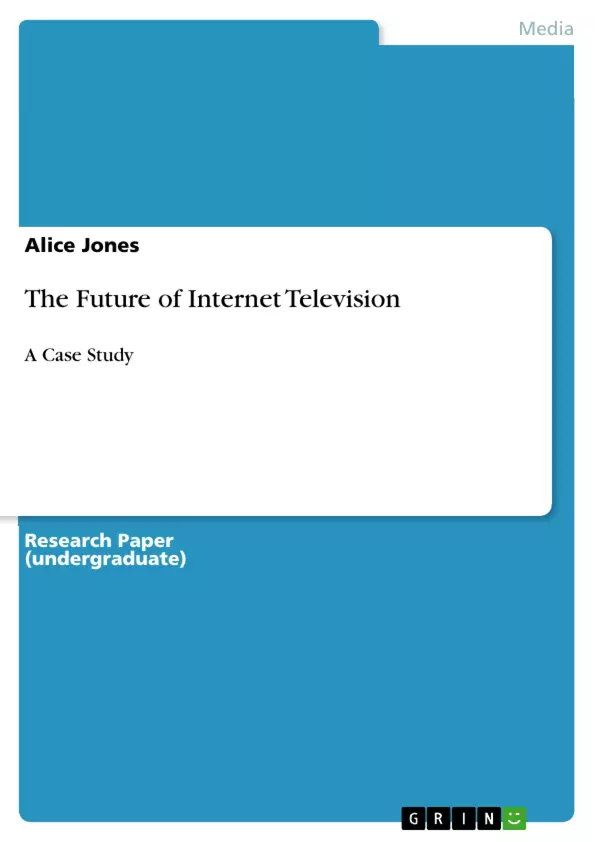This study investigated whether the advent of internet-broadcast television has a major impact on how people watch television programmes together with their reasons for choosing to watch television via the internet as opposed to more traditional platforms. Television once again is changing and developing in a new market and this study wanted to explore how these new developments are fitting into people’s lives. This study used the approach of Quantitative research and had a sample of 55 respondents. The results in the study discovered internet television is being embraced by people and counts towards their viewing habits.
Table of Contents
- Abstract
- Chapter 1: Topic selection/research aims and objectives
- Chapter 2: Literature Review
- Chapter 3: Methodology
- Chapter 4: Discussion and Presentation of Results
- Chapter 5: Conclusion and Reflection
Objectives and Key Themes
This research paper aims to examine the impact of the growth of internet television on viewing habits and its influence on the evolution of the television industry.
- The rise of internet television and its impact on traditional television viewing habits.
- The changing landscape of content creation and distribution with the emergence of online-only platforms.
- The role of technology, particularly broadband internet and mobile devices, in shaping the consumption of television content.
- The shift in consumer preference towards online viewing and the implications for the traditional television market.
- The impact of internet television on the viewing experience and social interaction around television content.
Chapter Summaries
Chapter 1: This chapter introduces the study's topic, focusing on the increasing popularity of online television viewing. It discusses the growth of both online content from traditional broadcasters and the emergence of online-only platforms. The chapter also delves into the technological advancements that have made online viewing possible, highlighting the shift in viewing habits from traditional television sets to various devices.
Chapter 2: This chapter presents a review of existing literature related to the subject of internet television. It examines the current state of the television industry, the impact of technology on viewing habits, and the evolution of content creation and distribution. The chapter also explores the social and cultural aspects of online television consumption.
Chapter 3: This chapter outlines the methodology employed in the research. It explains the research approach, sample size, and data collection methods. The chapter also discusses the specific research questions and the data analysis techniques used to address them.
Keywords
This research paper explores the rise of internet television, examining its impact on traditional television viewing habits and the evolving television industry. Key themes include the growth of online television content, the role of technology in shaping viewing habits, the shift towards online-only platforms, and the implications for the traditional television market. The study utilizes quantitative research methods and focuses on analyzing the preferences and motivations of consumers in the context of internet television.
- Quote paper
- Alice Jones (Author), 2013, The Future of Internet Television, Munich, GRIN Verlag, https://www.grin.com/document/265194



